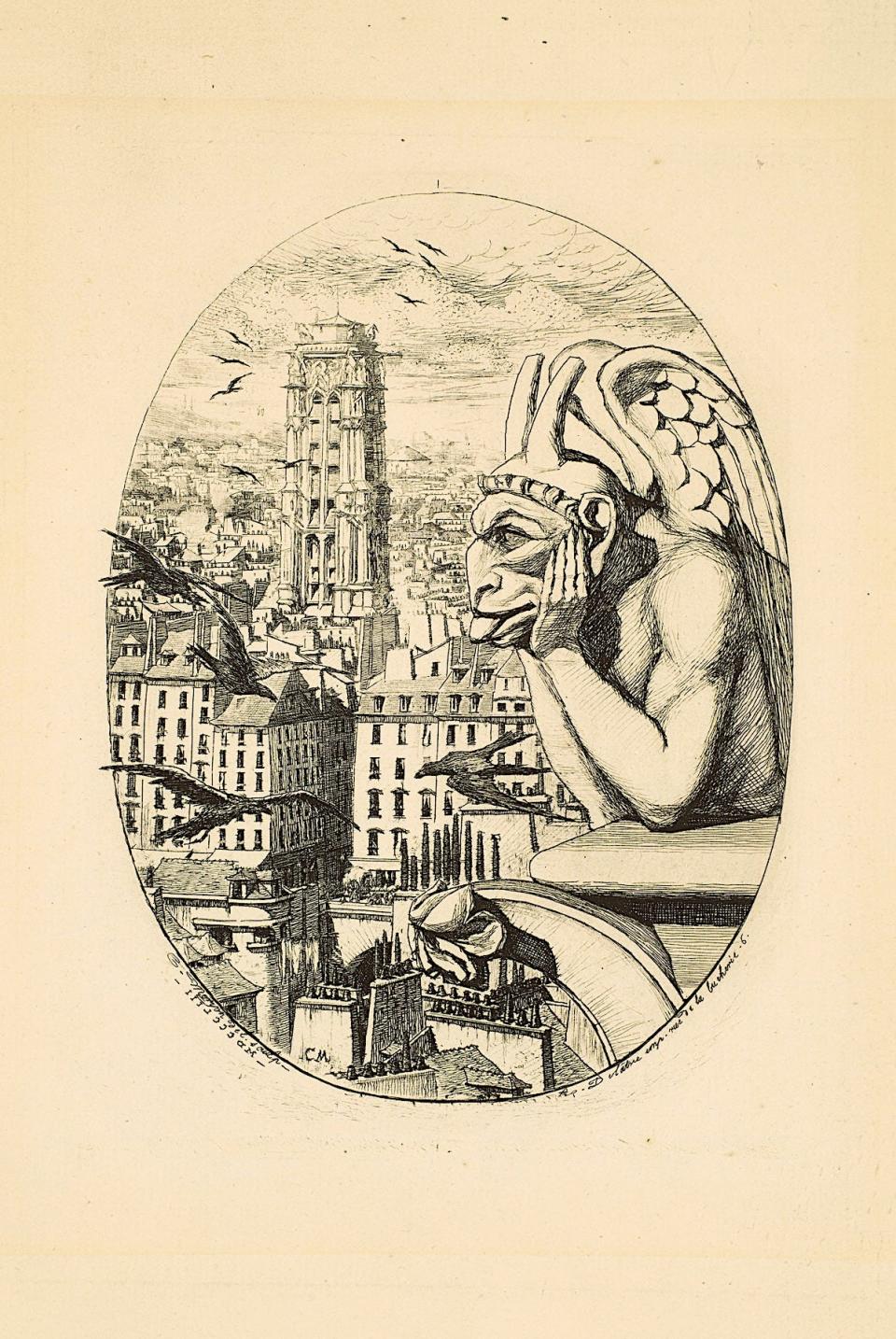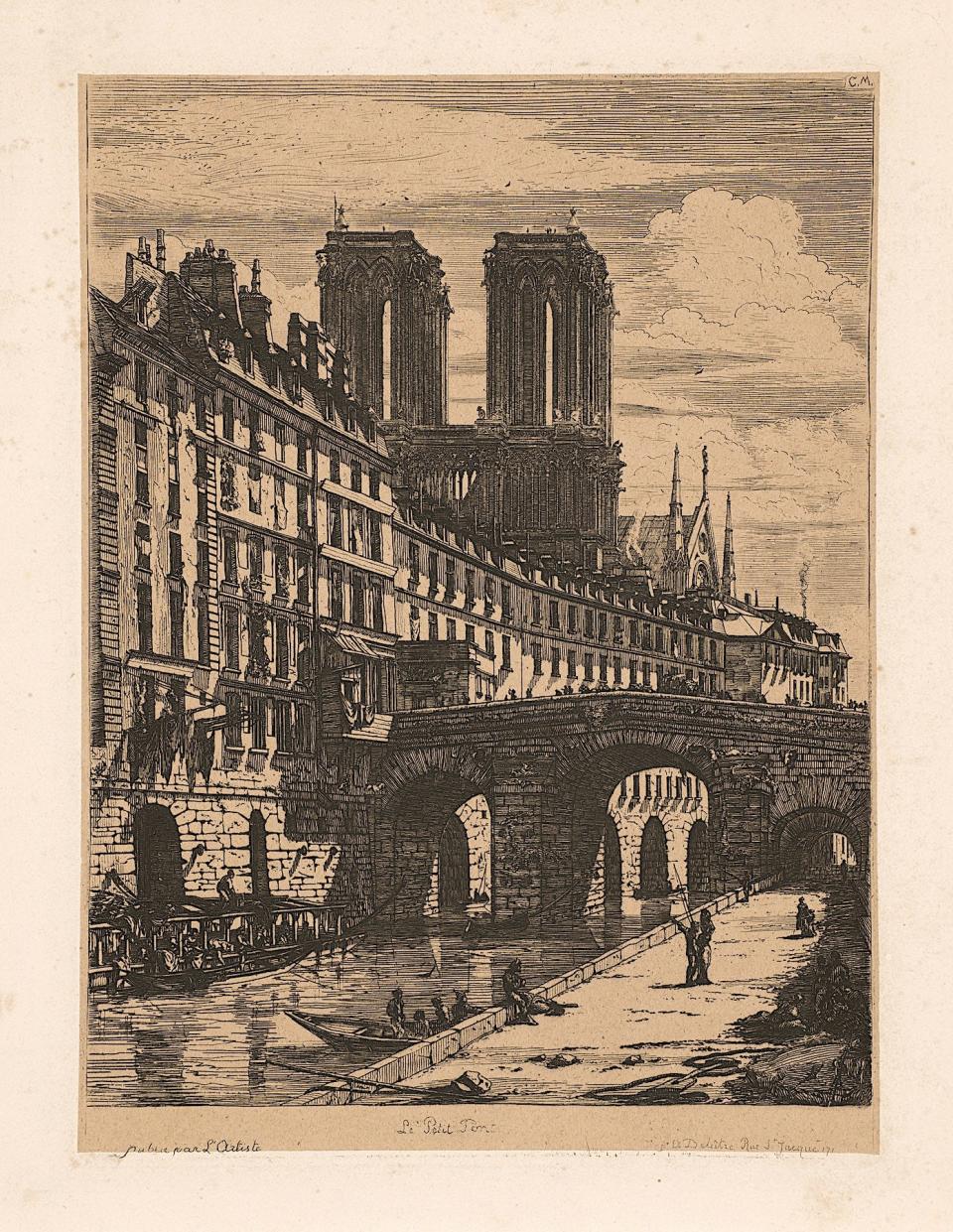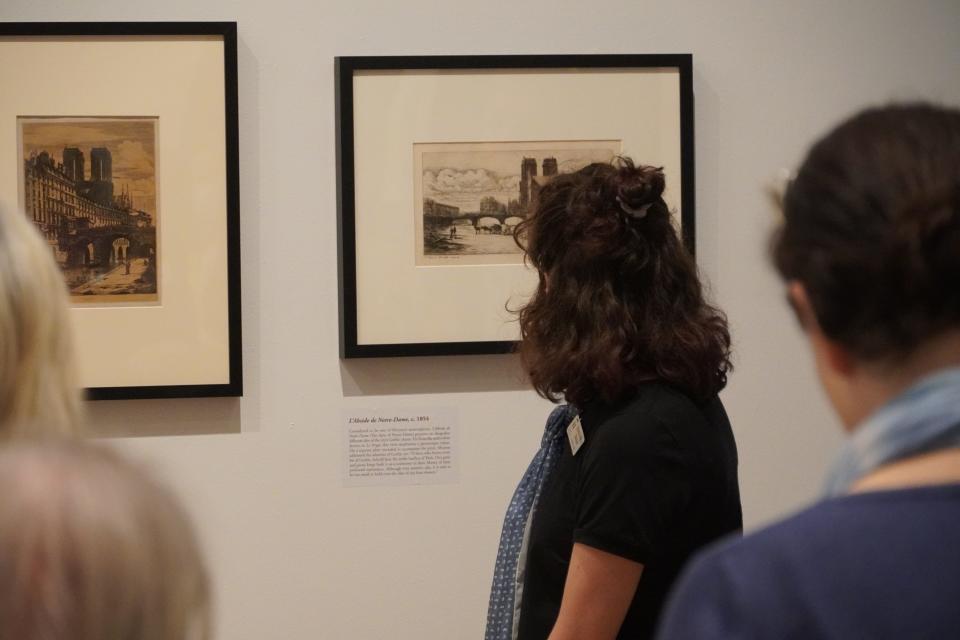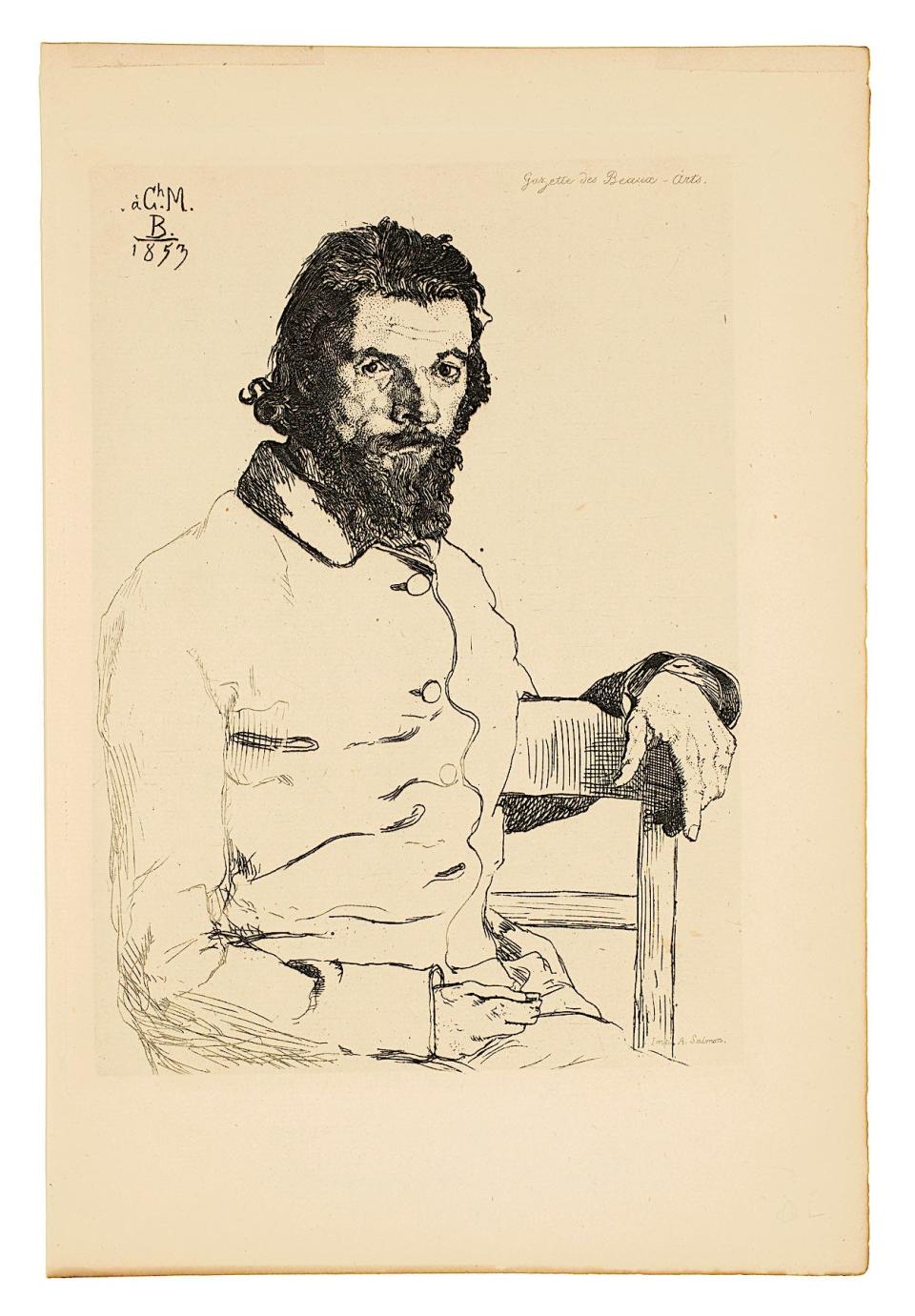At the Jepson Center, new exhibit Gothic Soul conjures memories of a bygone era in Paris
- Oops!Something went wrong.Please try again later.
It's Paris in the Second Empire –– the time where the city is the epicenter of the world, the name "City of Lights" is coined and the population in a rapid rise.
It's also the time of Charles Meryon, a French artist who leaned into etchings as he discovered he was colorblind. Meryon developed his drawing skills while coming up in the French Navy and that development will be on display at the Telfair Museums' Jepson Center with Gothic Soul, which is up now and will run through Jan. 8, 2023.
Anne-Solène Bayan, assistant curator at Telfair, said Meryon has a rich biography, but it's one that is usually focused on aspects like mental illness that don't paint a full picture of the artist.
New additions: Telfair Museums expands focus on art education with incoming Children's Art Museum at Jepson
Most recent exhibit: Explore inflatable art at Telfair Museum's new BLOW UP Exhibition
Telfair Museums senior curator: Art education matters and can expand all types of learning

"He died in an asylum (and) he was the illegitimate son of a French dancer and English physician, and he had a really terrible relationship with his father. He wrote a lot of letters (and) authors at the time wrote about him and made him the hero of (their) novels. He basically gets talked about as somebody who was mentally disturbed and created these works that are grotesque, or that are very dark because of his dark mind," she said.
"What I find interesting, and I wish I'd had more even more time to do this...you can't really pin down a lot of facts about his life because if you go back in the sources, they're all citing things that are either clearly false, or hearsay, or novels or interviews, that somebody else is sending the same interview, but rewriting it or translating it wrong, and so it sort of creates this fabulous myth. So even before he passed away, he was already being talked about as this crazy genius, printmaker.
Telfair Museums CEO: 'Our role is to be a leader in community arts collaboration'
"I think what I was trying to do with the show is to give all of these, all of these avenues into the topic without being this is what this work is about."

Staring at any of Meryon's etching feels like traveling back to Paris at the period of history by way of a memory. A piece such as 'Le Petit Pont' allows the viewer to gain of sense of the location –– a small group of fishers in the shadow of Notre-Dame –– but without a photorealism. Instead, that mythic quality immerses you and the sounds, smells and character of the location feel spoken through the mind, emotions and perspective of the artist but without the colors or textures to give you a vibrant account of that moment in time.
Bayan added that contemporary viewers of Meryon felt that same way –– his work was capturing something being lost. "(The work) feels like a page of history and I guess it just made me think of how even today, we think that things are moving so fast with technology. And at the time, this is the 19th century, you have people lamenting the fact that time has never sped up so fast," she said.
Rob Hessler: These three Savannah artists are creators to watch as the art scene continues to flourish
"He was sort of seizing on this Gothic Revival moment."

Bayan said that part of the series is also to better define what it means to be Gothic art, which was generally re-written during the 19th century when Meryon was working. "We think of Notre-Dame as this place filled with gargoyles. But, in fact, if you look at the history, those creatures...were added in the 19th century. So people still think of them as (a) medieval Gothic thing. They're not," she said.
More: Telfair Museums introduces free admission program with opening of landmark Golding exhibit
"Today, the definition of what is Gothic was definitely sort of rewritten in the 19th century, which is always fun for me to think about how knowledge gets lost. That sort of leaves space for these artists to really seize on the Zeitgeist and make it sort of be a part of defining things."
Gothic Soul: Charles Meryon is on display now at the Jepson Center and will be there until Jan. 8, 2023. For more information about the exhibition, visit telfair.org/exhibitions/gothic-soul-charles-meryon/.

Zach Dennis is the editor of the arts and culture section, and weekly Do Savannah alt-weekly publication at the Savannah Morning News. He can be reached at zdennis@savannahnow.com or 912-239-7706.
This article originally appeared on Savannah Morning News: Savannah GA events: Gothic Soul: Charles Meryon at Telfair Museums

